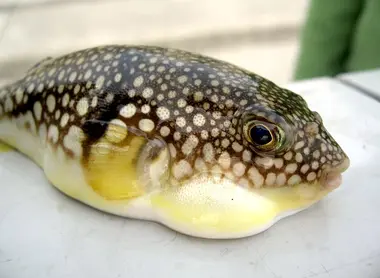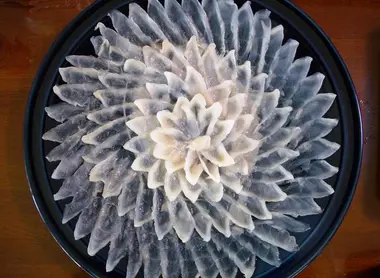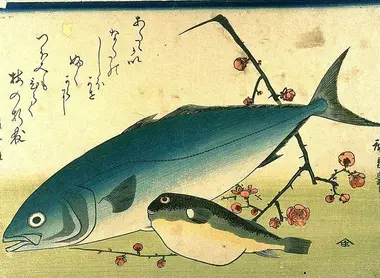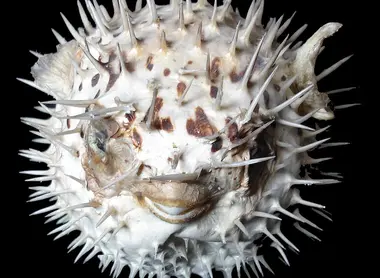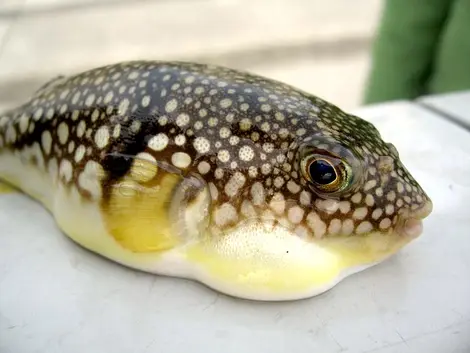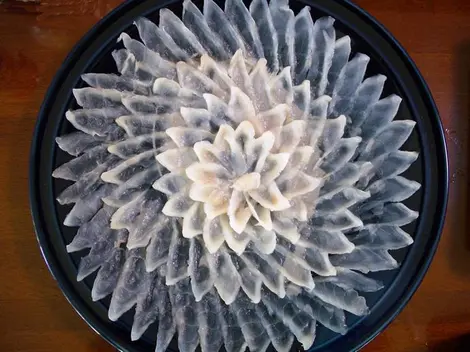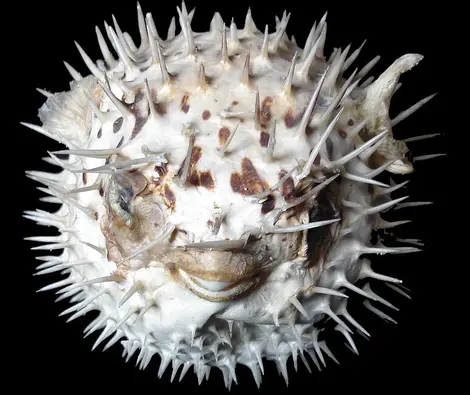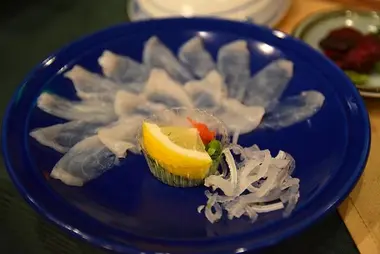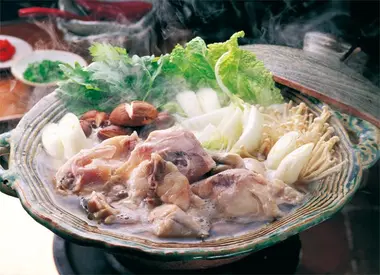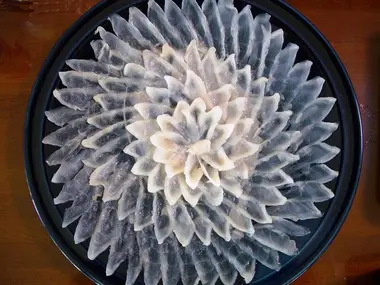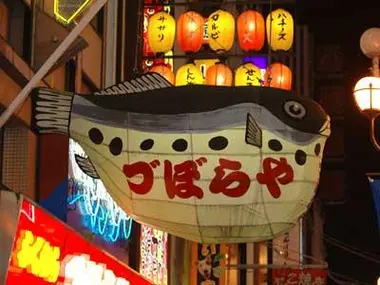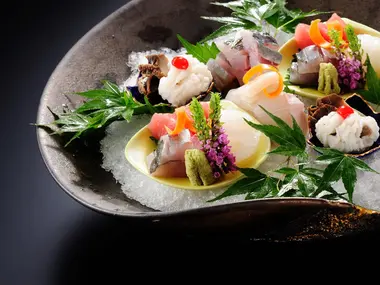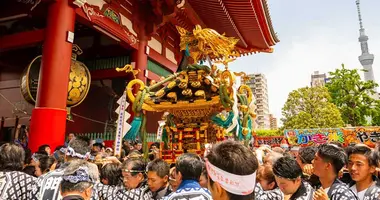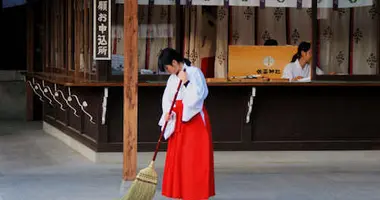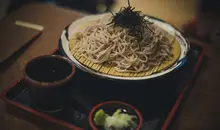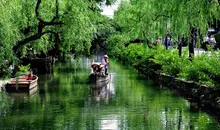Fugu, the poison fish
- Pubblicato il : 06/11/2019
- Per : G.L.
- Youtube
Le fugu, ce poisson emblématique de la gastronomie japonaise, fascine autant qu'il inquiète par sa dualité. Connu sous les noms de poisson-globe ou poisson-ballon, il est réputé pour sa chair délicate mais aussi pour le poison mortel qu'il contient. Chaque année, ce mets d'exception attire des milliers d'amateurs prêts à débourser des sommes importantes pour goûter à cette expérience culinaire unique. La tétrodotoxine qu'il renferme, plus puissante que le cyanure, nécessite une préparation méticuleuse par des chefs spécialement formés. Entre tradition ancestrale et risque calculé, le fugu représente parfaitement cette part de la culture japonaise où l'art culinaire côtoie le danger.
An unusual poisonous fish
The fugu is nicknamed "sunfish" or "pufferfish" because it swells by absorbing a large amount of water to repel its predators while bristling with spines, thus operating a real metamorphosis. But it has another formidable weapon: the poison contained in its organs (liver, ovaries, and eyes): tetrodotoxin, a neurotoxin more powerful than cyanide. Its effects are dazzling: the tongue becomes numb first, then the lips and the entire mouth. The nervous system is affected, the victim may seize, lose speech, become paralyzed, then lose consciousness and die... Four to eight hours: this is the average survival time after absorption of the poison and there is no antidote. Each year, several poisonings are linked to a bad preparation of this fish.
However, thanks to strict legislation, the number of victims has decreased, and recently no deaths have been recorded. Some people, by challenge, risk tasting the forbidden fish, such as the famous kabuki theater actor, Bando Mitsugoro VIII (1906-1975), who wanted to impress his guests by tasting the animal's liver ... and who succumbed to his bravado.
- Read also: The most popular fish in Japan
Who can cook Fugu fish?
To curb poisoning, strict legislation governs the preparation and sale of fugu. The sale of liver and poisonous parts of fish is prohibited. The government is also asking fugu fishermen or individuals to whom third parties have given them not to have them prepared themselves because this is the main cause of poisoning.
Only fugu prepared by specialists recognized by the prefectures can be served to consumers. Fugu cooks must undergo a minimum of three years and up to five years of training before passing a very difficult test, which, if they pass, will enable them to obtain the necessary state certificate.
The preparation consists of cutting the fish which are still alive, avoiding piercing the liver or the reproductive organs, where the poison is nestled. To do this, the chefs use a special knife, the fugu hiki, which they store separately (for sanitary purposes). In addition, the poisonous parts prohibited for consumption are thrown in a bin that locks with a key for added security!
Where to eat fugu safely?
There are some 3,800 fugu restaurants across Japan, of which around 800 are located in Tokyo. However, most establishments serving fugu are located around two ports that bring in the largest catch of the famous fish: Shimonoseki (on the Sea of Japan, in the far southwest of Honshu), and Oita. between the spa of Beppu and Usuki, on the island of Kyushu.
Shimonoseki even proclaimed herself the "Japanese capital of fugu", and pays homage to her favorite fish every year on February 9. It is in the market of this city that passes half of the national catches and that some 50 licensed chefs are installed there. It is also in Shimonoseki at the end of the sixteenth century, the warlord Hideyoshi soldiers were poisoned from eating fugu and so its consumption was banned for two centuries. It was legalized again by Prime Minister Hirobumi Ito (1841-1909), who, passing through Shimonoseki, having tasted fugu and having greatly appreciated it, "reinstated" the pufferfish for consumption.
The fish is then eaten boiled, including the muzzle, immersed in a nabe (pot) with mushrooms, vegetables, and tofu, all washed down with a glass of hirezake, a sake whose bottle contains a fin of fugu.
It is at the end of this meal that the essence of the pufferfish is revealed, once the lips are slightly anesthetized by the tiny dose of poison that it still contained. Bland for some, subtly exquisite for others ... The idea of having tasted death and living to tell about it is the irresistible appeal!
Sashimi and nabe: a taste of danger
Usually, fugu is a meal in its own right. A "fugu menu" begins with a platter of very thin strips of raw fish, sashimi with sublime translucent flesh that is delicately dipped in an acid and spicy sauce flavored with Japanese chives.
Without going as far as Shimonoseki or Oita, there are very famous restaurants in Tokyo, for example, the famous Usukifugu Yamadaya (starred by the Michelin guide, very pricy...) or in Osaka, at Zuboraya.
In general, chefs display the certificate on the wall of their establishment certifying their expertise. Since the fugu is prepared alive, most restaurants display the unsuspecting fishes in the aquarium.
The level of qualification and expertise of the chefs and the strong demand from consumers make this fish an expensive, even exorbitant, food.
And for the curious and brave, here is our selection of addresses: 8 fugu restaurants in Tokyo.
